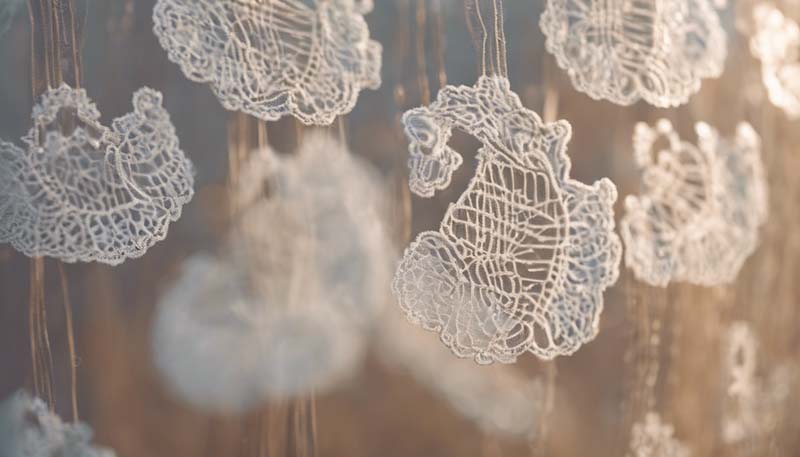The Language of Lace: Delicate Details in Design
The Language of Lace: Delicate Details in Design
Lace has been an exquisite and intricate part of the world's textile history for centuries. Its delicate patterns and intricate designs have graced clothing, furniture, and even architecture, offering a level of sophistication and elegance that is hard to replicate. In this article, we will explore the history, techniques, and impact of lace in design, as well as its modern interpretations and how it continues to inspire artists and designers around the globe.
Introduction to Lace
Lace is a fabric made of yarn or thread in an open weblike pattern, made by either by hand or machine. It can be made using various techniques, including needlework, pillow lace-making, and bobbin lace. The history of lace dates back to the 16th century, with its origins in Europe, particularly in regions like Flanders, Italy, and England. Over time, lace became a symbol of wealth and status, as it was a time-consuming and expensive material to produce.
Advertisement
History of Lace
The early history of lace is marked by its development as a luxury item for the elite. As the art of lace-making spread across Europe, distinct regional styles emerged, each with its own unique characteristics and techniques. In the 18th and 19th centuries, lace became an essential part of women's fashion, adorning everything from dresses and hats to handkerchiefs and lingerie.
Techniques in Lace Making
There are several techniques used in lace-making, each producing a different look and feel. Some of the most common techniques include:
- Needlepoint Lace: Created by hand using a needle and thread, this technique involves looping and twisting the thread to create intricate patterns.
- Bobbin Lace: A more complex method, bobbin lace is made by weaving together threads wound on bobbins, creating a more open and airy texture.
- Pillow Lace: Also known as pillow or burr lace, this technique uses a cushion or pillow to support the threads during the weaving process.
- Crochet Lace: A quicker method that involves using a crochet hook to create lightweight, openwork designs.
- Machine Lace: With the advent of the Industrial Revolution, machine-made lace became more prevalent, allowing for faster production and greater accessibility.
Lace in Modern Design
In recent years, lace has made a significant comeback in the world of fashion and design. Modern designers have reimagined lace in innovative ways, using it in everything from haute couture to ready-to-wear fashion, as well as in interior design and even architecture. The delicate and intricate nature of lace lends itself well to contemporary design, offering a unique and sophisticated touch to any project.
Lace in Fashion
Lace continues to be a popular material in the fashion industry, with designers using it to add a romantic and feminine touch to their collections. From delicate lace dresses to intricate lace detailing on blouses and jackets, the versatility of lace allows it to be used in a variety of ways. Additionally, lace has also been reinterpreted in more avant-garde and unconventional ways, pushing the boundaries of traditional design.
Lace in Interior Design
Lace has also found its way into interior design, where it can be used to add a touch of elegance and sophistication to a space. From lace curtains and tablecloths to lace-embellished furniture and accessories, the delicate nature of lace can soften and enhance a room's overall aesthetic. In addition, lace can be used in more unexpected ways, such as in wall coverings or lighting fixtures, offering a unique and eye-catching design element.

Conclusion
Lace is a timeless and versatile material that has captivated designers and artists for centuries. Its delicate patterns and intricate details offer a level of sophistication that is unmatched by other textiles. As we have seen, lace has been used in a variety of ways throughout history and continues to inspire modern designers in both fashion and interior design. With its ability to add a touch of elegance and sophistication to any project, lace remains a staple in the world of design and will undoubtedly continue to enchant and inspire for generations to come.
 2024-07-15
2024-07-15 164 Comments
164 Comments